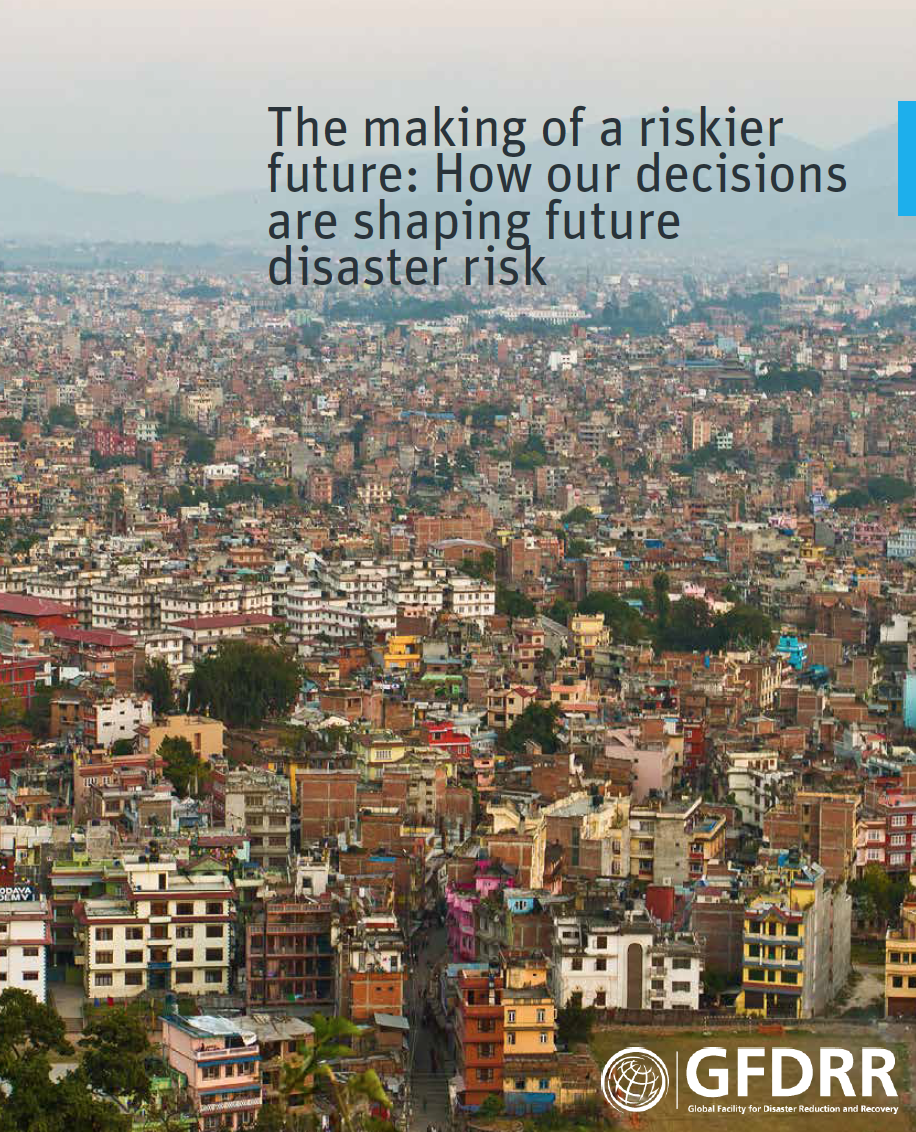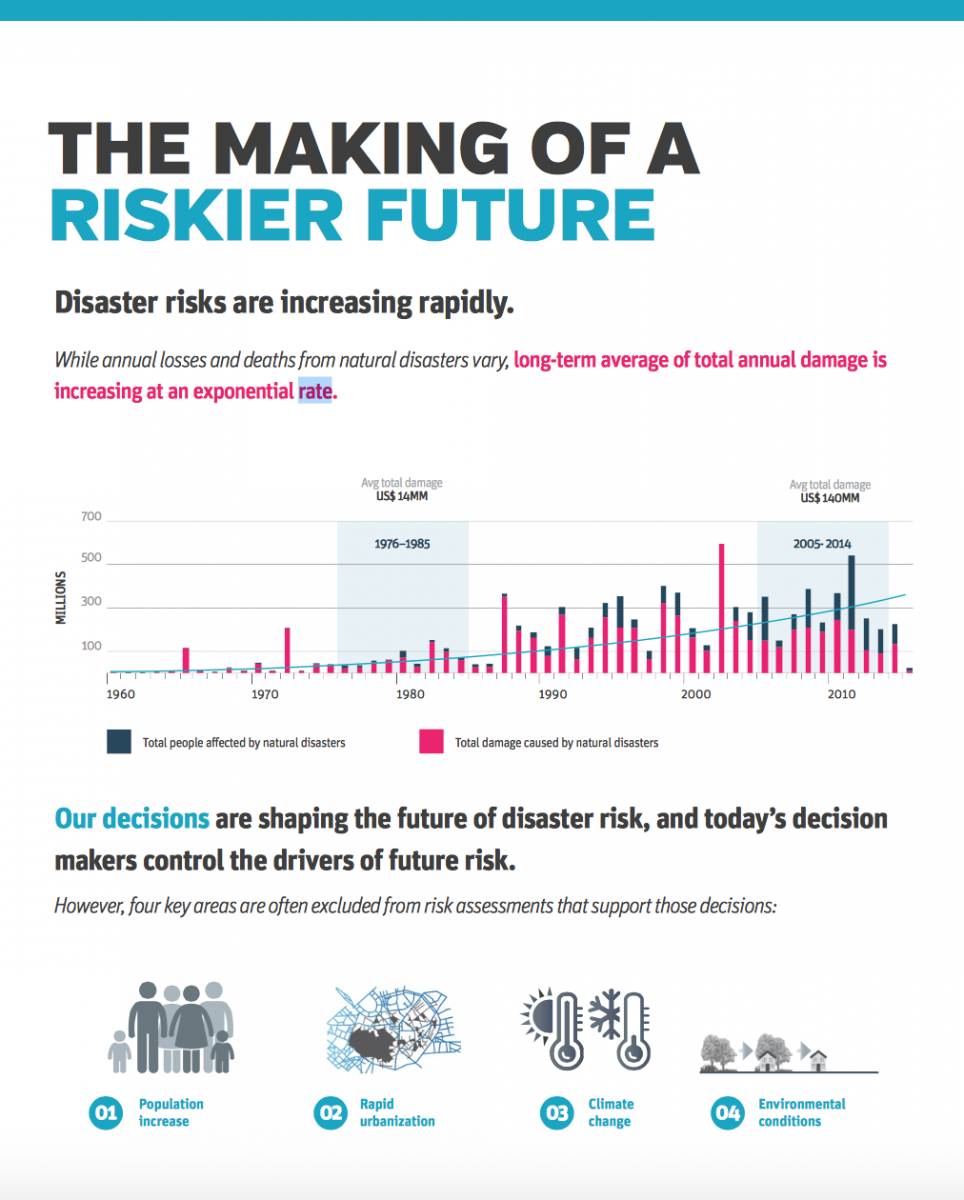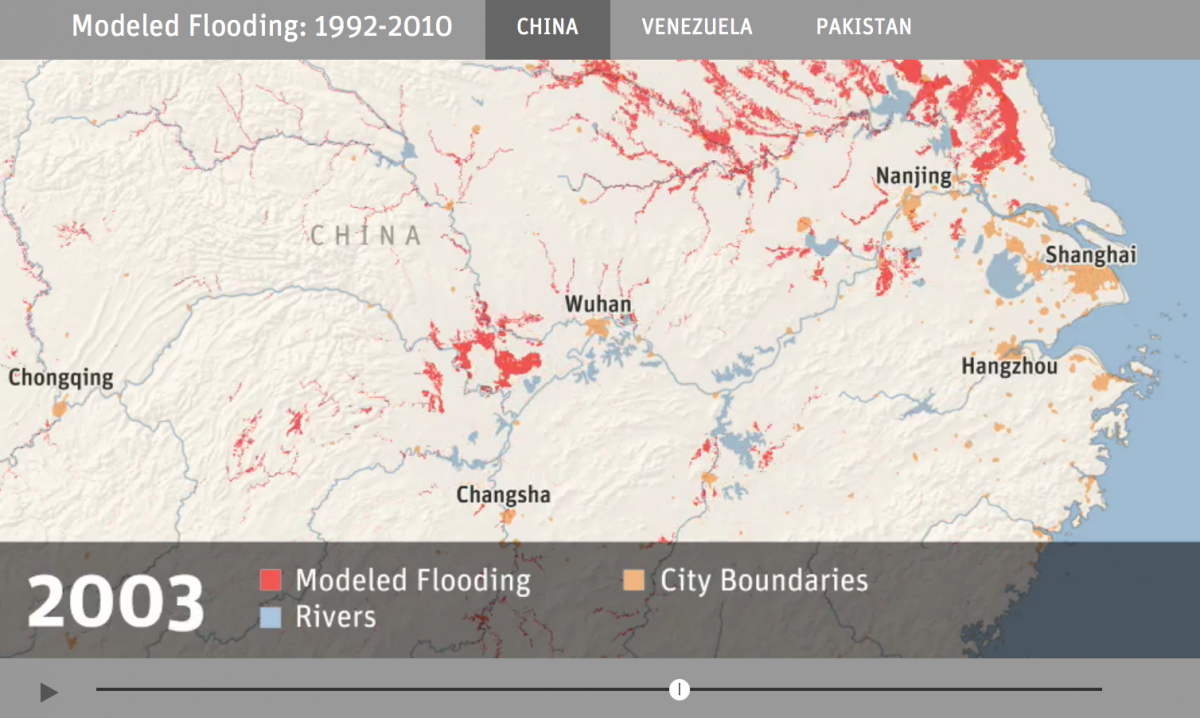STORY HIGHLIGHTS
- Most disaster risk assessment today is static, focusing only on understanding current risks. A paradigm shift is needed toward dynamic risk assessments, which reveal the drivers of risk and the effectiveness of policies focused on reducing risk.
- Global disaster risk is changing extremely fast, due to combined dynamics of hazard, exposure, and vulnerability.
- The drivers of disaster risk are in the control of policy makers, society, and individuals—but accurate assessment and continuous reevaluation of risk is required to enable effective risk reduction and prevent drastic increases in future losses.
Last month a 7.8 magnitude earthquake in Ecuador left over 600 people dead and almost thirty thousand injured, with economic damages projected at more than $3 billion. Unfortunately, events like these are becoming all too commonplace. Impacts from natural disasters are on the rise, posing a growing threat to economies and the lives of millions of people around the world.
In fact, global losses from disasters have nearly quadrupled over the last few decades, from an average of $50 billion per year in the 1980s to close to $200 billion per year over the last decade. Poor people suffer the most in such situations – in the last 20 years, low-income countries experienced just over a quarter of floods, but bore nearly 90 percent of related casualties.
Trends like population growth and rising urbanization are driving losses in vulnerable regions. Up to 1.4 million people are moving into cities every week, with much of this growth – up to 90 percent through 2050 – happening in Africa and Asia. At the same time, climate change threatens push 100 million more people into poverty by 2030. Examples like these make it clear that disaster risk isn’t static, but rapidly evolving.
More governments, communities, and international organizations are learning that smart investments in preparedness and resilience can keep natural hazards from becoming human catastrophes. These investments can also have other benefits, like spurring jobs and economic growth, more educational opportunities, improved gender equality, environmental protection and can help meet demanding development goals by 2030.
Accurate and reliable disaster risk information is the lynchpin to achieve effective investments. According to the Global Facility for Disaster Reduction and Recovery(GFDRR)—a World Bank-managed partnership of 34 countries and nine international organizations making a compelling case for governments to invest before a disaster strikes requires rapid, rigorous, and regular risk identification. With technology making disaster risk information more accessible than ever, people and governments worldwide are improving their ability to identify risk.
"With major advances in technology and research which are both accessible and more affordable, this is an opportunity for policy makers, development practitioners, and communities to equip themselves with information on how to best prepare for a hazard," says Johne Roome, Senior Director for Climate Change at the World Bank Group. "As climate change threatens to increase disaster risk and wash away important development gains, it’s well past time to take an even more active and serious approach to smart disaster risk management."
This week, GFDRR will host the 2016 Understanding Risk Forum in Venice to share the latest innovations in the field of disaster risk identification. The Forum will offer over 700 delegates a platform to exchange best practices, collaborate, and introduce cutting-edge technology and breakthrough research in different areas of disaster risk management.
Over five days, this biennial conference will attract a unique combination of private sector businesses like FM Global, academic institutions such as Columbia University, non-profits like BBC Media Action, policy makers, and community-based organizations.
The Forum will also launch several flagship GFDRR products in the field of disaster risk identification, including:
- ThinkHazard!: At the heart of effective disaster risk management is a need for reliable and understandable information. Think Hazard! is the first free and open-source online tool that allows users to understand how eight different kinds of hazards — earthquake, flood, landslide, wind, storm surge, drought, volcanic eruption, tsunami — might affect a specific geographic area for every single country in the world. It also highlights how these hazards may evolve with climate change. Understanding the potential for such events will mean that we can make our roads, hospitals, schools, agriculture etc. more resilient to natural hazards and climate change. For example, people rarely think of the potential for earthquakes in Uganda, but now everyone who builds schools in Uganda can quickly access information to understand the threat from different natural hazards and ensure that schools and students are safe from disasters.
- The Making of a Riskier Future: Decision-makers inherit disaster risk from their predecessors (e.g. all the buildings in Kathmandu that were not designed to withstand earthquakes). It is very difficult and costly for policy makers to "undo" this inherited risk. But they can change the disaster risk that their children inherit. And often these decisions are not costly and have many other benefits in rapidly urbanizing cities. Unfortunately, our understanding of risk today rarely reflects our changing climate, population growth and rapid urbanization - forces that are dramatically reshaping the risk faced by many countries. The need for a paradigm shift in thinking drives the GFDRR’s flagship 2016 publication "The Making of a Riskier Future: How our Decisions Shape the Future of Disaster Risk". With a number of stark examples from around the world, this publication seeks to change the global conversation on disaster risk to better advise decision makers.
Humanitarian and Development Partnering for Resilience
UR2016’s approach to connecting people and groups across the spectrum of disaster risk management exemplifies the power of partnerships. Hosting this forum in Venice, a city straining to stay ahead of growing climate risk, offers a unique opportunity for GFDRR to integrate civil society and government efforts with advances in technology to solve critical challenges in developing countries.
Taking place a week before the World Humanitarian Summit, UR2016 aims to spark dialogue between global humanitarian organizations, governmental actors, researchers, and decision makers, both at the Forum and the conference following. With disasters, conflict, and other crises affecting millions of people, a stressed humanitarian system needs sustainable solutions that can mitigate displacement and create more resilient communities.
For more information on specific sessions please visit here.



